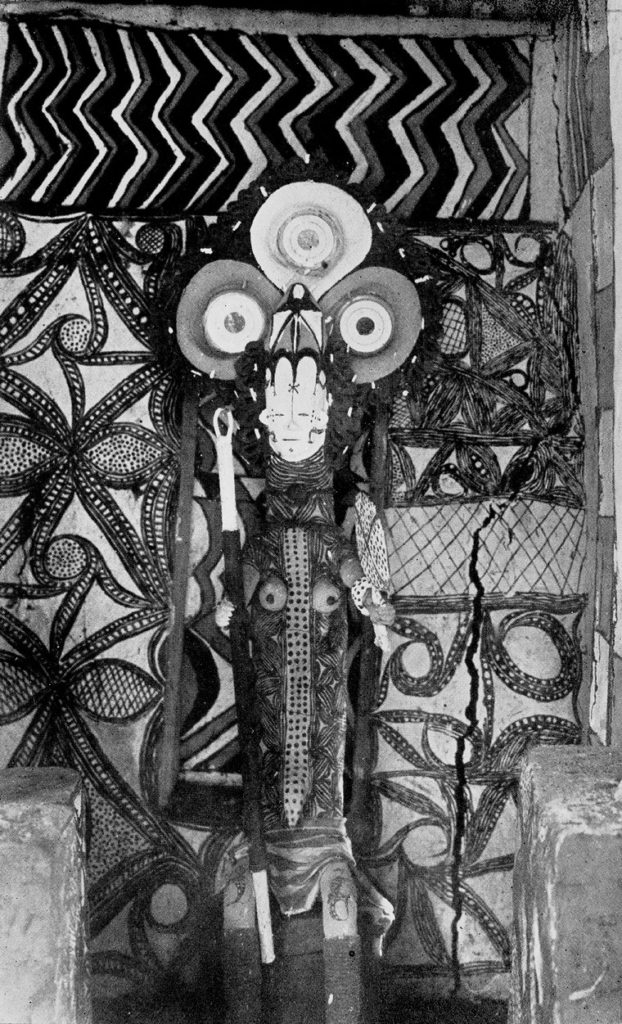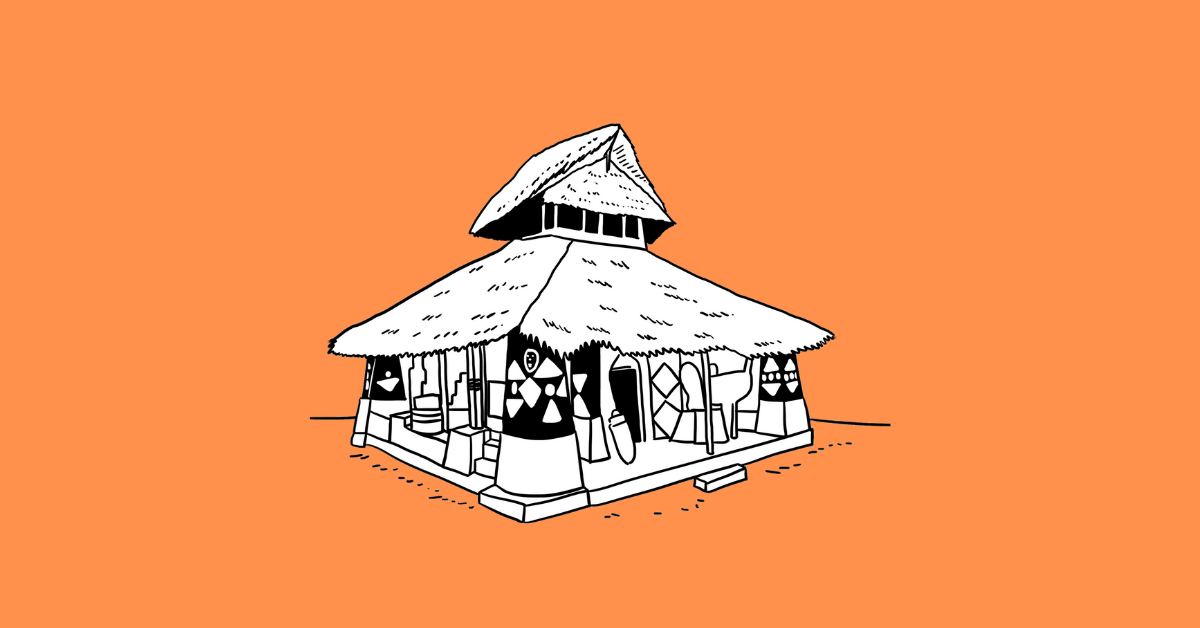Colonial experience has informed a narrative of African modernity and architectural progress. But what happens when we lose our culturally rich historic traditions? In the case of mbari ulo, the spiritual-artistic-architectural sites found in southeastern Nigeria; turning away from indigenous cosmology has meant leaving behind a communal and creative culture.
Mbari structures were cosmological, usually built as an offering to Ala, the feminine Earth spirit of fertility, creativity, and morality. Much more than simple religious sites, every mbari edifice was “a merging of architecture, sculpture, bas relief, and painting, designed and executed as a work of art.” The complex build process included design, performance and rituals, and material construction. These impermanent sites demonstrate a once deeply engrained Igbo understanding of how the natural and spiritual worlds coexist together in shared in time and space.
“The religious foundations of mbari shaped the process”

Individuals selected for the months or sometimes year-long construction process took on a spiritual status and gave themselves wholly over, assuming new names, dress, and identities. Multiple hands – of artists, labourers, women, men, support workers – helped bring the site into being: Women preparing meals, fetching water, and preparing clay; labourers laying walls; artists leading the sculpting of curves into forms of deities, humans, animals, and other beings, and painting multicoloured and elaborate finishes. With their bodies, these workers also performed rituals, chants, songs, dances, and drumming, all part of the development process and in preparation for the site’s opening. Each mbari, as process and product, embodied material and metaphysical worlds.
The religious foundations of mbari shaped the process and product as fundamentally communal: Each site was constructed collectively; upon completion, the site would be transferred to the community for its ownership and usage. Each site built was built to last for only a few years. With its natural wear, tear, and demise, the communal design-perform-build process begins again, this time with a new group of selected community members.
“colonial influences overcame mbari”
Initially, colonial influences were conscripted into mbari: a sculpture of the thunder deity Amadioha represented in a schoolboy uniform, or another of a colonial officer emerging from the ground, or imported materials employed in construction – a means of showing respect to the deities by adorning them with the most valued materials. Then, colonial influences overcame mbari: Urbanization through the colonial and post-independent era production of cities decentered village life, and introduced architecture, planning, and building construction as professional specialities certified through westernized educational training, rather than the indigenous apprenticeship system. Local aesthetic tastes inclined toward these western building materials and styles.
Most crucially, Christianization has facilitated a turning away from the Igbo indigenous spiritual beliefs, and along with that, the mbari and its collective system of making. Mbari is just one example of a cultural forgetting of a grounded, indigenous practice of communal participation in design, construction, and building. While private real estate and building development companies proceed in constructing a vision of urban modernity, complete with international styles and western aesthetics, this “progress” has come at the loss of communality that had always been at the centre of Igbo culture.
Image via Wellcome Collection – Creative Commons license

